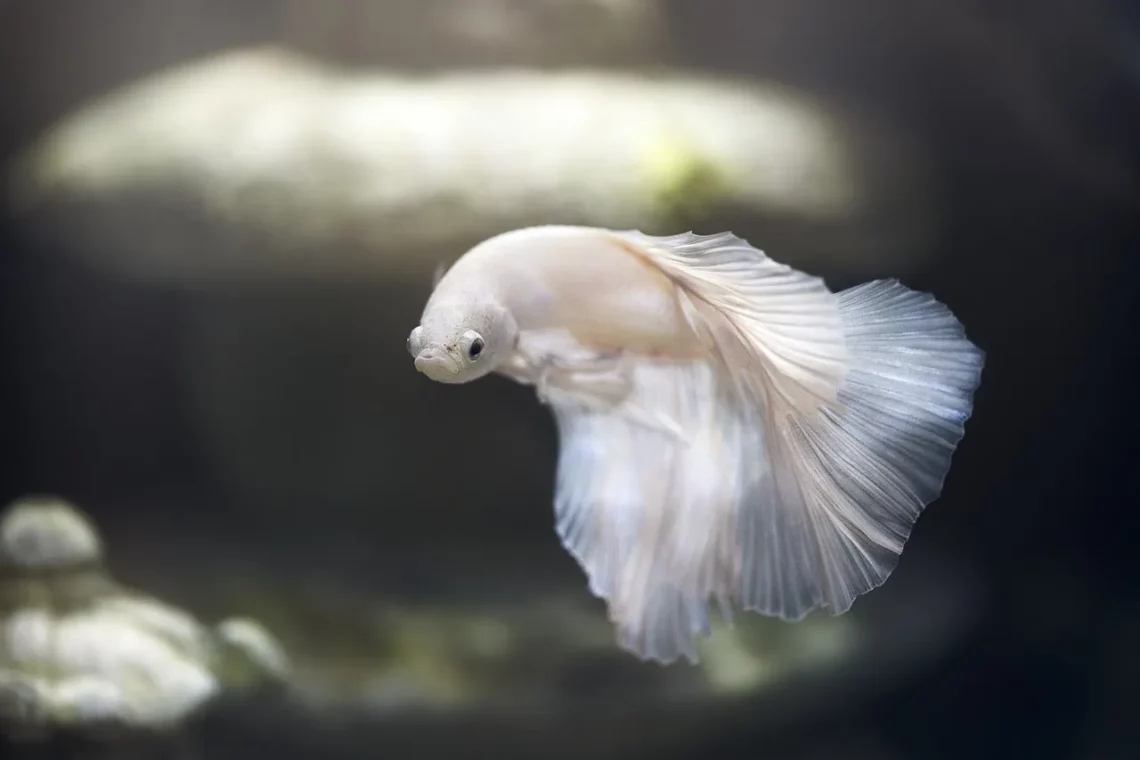
Understanding Female Betta Fish: Care, Behavior, and Tank Setup
Betta fish, known for their vibrant colors and unique personalities, have captivated aquarists around the world. While male bettas often steal the spotlight with their extravagant fins and aggressive behaviors, female bettas are equally fascinating, offering a different set of characteristics that can make them ideal pets for both novice and experienced fish keepers. These fish are not just beautiful; they also display a range of interesting behaviors and social interactions that can enhance any aquarium setup.
Female bettas, often overlooked, are known for their more subdued colors and smaller fins compared to their male counterparts. However, they possess a wide variety of patterns and colors, making them just as appealing. Understanding the nuances of female betta fish is essential for anyone looking to care for these creatures. Proper care, including tank environment, diet, and social dynamics, is crucial for their health and well-being.
Moreover, female bettas can exhibit a range of behaviors that are both intriguing and educational. From their interactions with other fish to their breeding rituals, these fish provide a glimpse into the complexity of aquatic life. By appreciating the unique traits of female bettas, fish enthusiasts can create enriched environments that promote their natural behaviors and enhance their quality of life.
Understanding Female Betta Fish Behavior
Female betta fish exhibit a range of behaviors that reflect their social nature and adaptability. Unlike males, who are often solitary and territorial, females can thrive in groups, also known as sororities, as long as their tank is adequately sized and well-maintained. This social structure not only allows them to interact with one another but also provides mental stimulation which is essential for their overall health.
When females are housed together, they establish a hierarchy which can lead to fascinating social dynamics. Observing these interactions can be quite rewarding for aquarists. However, care must be taken to ensure that the tank is large enough to prevent aggression. A minimum of a 20-gallon tank is recommended for a group of female bettas, as it provides ample space for them to establish territories and reduces stress.
In addition to their social behaviors, female bettas can also exhibit various forms of communication. They use body language, such as changing their color intensity or displaying specific fin movements, to convey their mood or intentions. For example, a female that is stressed may show a darker hue, while a relaxed fish will display brighter colors. Understanding these signals is essential for fish keepers to ensure their pets are comfortable and healthy.
Moreover, female bettas are known to engage in interesting breeding behaviors. When ready to breed, a female will exhibit a striped pattern along her body, signaling her readiness to mate. This process can be captivating to observe, but it requires careful management to ensure the safety and health of both the male and female fish.
Maintaining an environment that encourages natural behaviors is crucial for female bettas. Providing hiding spots, such as plants or decorations, allows them to retreat when feeling threatened and helps to reduce stress in the tank. Overall, understanding female betta behavior is vital for creating a thriving aquarium ecosystem.
Tank Setup for Female Betta Fish
Setting up a tank for female betta fish requires careful consideration of various factors to ensure a healthy and stimulating environment. The first step is choosing the right tank size. As mentioned earlier, a minimum of 20 gallons is recommended for a sorority of female bettas. A larger tank not only provides more space for swimming but also helps to maintain stable water parameters, which is crucial for the health of the fish.
The substrate and decorations in the tank play a significant role in the overall environment. A fine gravel substrate is ideal as it allows for easy cleaning and doesn’t harm the delicate fins of the bettas. Adding plenty of plants, both live and silk, provides hiding spots and reduces stress. Live plants, such as Java fern or Anubias, can also help maintain water quality by absorbing nitrates.
Water quality is another critical aspect of tank setup. Female bettas thrive in slightly acidic to neutral pH levels, ideally between 6.5 and 7.5. Regular water changes are necessary to keep toxins at bay, and a good filtration system can help maintain clean water. It’s essential to cycle the tank before introducing any fish to ensure a stable environment.
Temperature is also an important factor to consider. Female bettas prefer warmer waters, ideally between 76°F and 82°F. Using a reliable aquarium heater can help maintain the desired temperature range.
Additionally, tank mates should be chosen carefully. While female bettas can coexist with other species, it’s crucial to avoid fin-nipping fish or overly aggressive species. Peaceful community fish such as tetras or rasboras can make great companions, but always monitor interactions to prevent stress or aggression.
Creating a well-thought-out tank setup not only enhances the aesthetic appeal of the aquarium but also promotes the well-being of female betta fish. A balanced environment encourages natural behaviors and leads to healthier, happier fish.
Feeding and Nutrition for Female Betta Fish
A well-balanced diet is essential for the health and vitality of female betta fish. These fish are carnivorous by nature, so their diet should primarily consist of high-quality protein sources. High-quality betta pellets, designed specifically for their dietary needs, should form the basis of their diet. These pellets are formulated with the right balance of nutrients to support growth, color enhancement, and overall health.
In addition to pellets, it’s beneficial to incorporate a variety of other food sources to ensure a well-rounded diet. Frozen or freeze-dried foods such as brine shrimp, bloodworms, and daphnia are excellent protein-rich options that can stimulate natural hunting behaviors. Offering these treats a few times a week can help keep your female bettas engaged and excited during feeding time.
It’s important to avoid overfeeding, as this can lead to health issues such as obesity and poor water quality. A good rule of thumb is to feed them only as much as they can consume in a few minutes, typically once or twice a day. Regularly monitoring their feeding habits can help identify any health issues early on.
Additionally, providing plant-based foods can also benefit female bettas. They can occasionally nibble on blanched vegetables like zucchini or peas, which can aid in digestion.
To ensure optimal health, always provide fresh, clean water and avoid leaving uneaten food in the tank, as it can pollute the water. Regular water testing can help keep track of ammonia, nitrite, and nitrate levels, ensuring a safe and healthy environment for your fish.
Understanding the dietary needs of female betta fish is vital for their longevity and health. A varied and balanced diet will not only enhance their vibrant colors but also support their immune systems, helping them thrive in your aquarium.
Common Health Issues and Prevention
Like all pets, female betta fish can experience health issues that require attention. Recognizing the signs of illness early can make a significant difference in treatment outcomes. Common health problems in female bettas include fin rot, ich, and swim bladder disease.
Fin rot is often caused by poor water quality, stress, or injury. Signs include frayed or discolored fins. Maintaining a clean tank and providing hiding spots can help reduce stress and prevent this condition.
Ich, or “white spot disease,” is another common ailment, characterized by white spots on the body and fins of the fish. It is often a result of stress or sudden temperature changes. Treatment typically involves raising the water temperature gradually and adding medication designed to combat ich.
Swim bladder disease affects the fish’s ability to maintain buoyancy, causing it to float uncontrollably or sink to the bottom. This condition can result from overfeeding or a poor diet. To prevent this, ensure a balanced diet and avoid overfeeding.
Regular health checks are essential for early detection of any issues. Observing your female bettas for changes in behavior, appetite, or physical appearance can alert you to potential health problems.
Preventive care is crucial for maintaining a healthy aquarium environment. Regular water changes, proper filtration, and routine cleaning can help reduce the risk of health issues. Additionally, quarantining new fish before introducing them to the main tank can prevent the spread of disease.
In conclusion, understanding the common health issues that female betta fish may face, along with preventive measures and early detection, can significantly enhance their quality of life. Always consult with an aquarist or veterinarian for specific health concerns.
**Disclaimer: This article is for informational purposes only and does not constitute medical advice. For any health issues concerning your fish, please consult a qualified veterinarian.**




